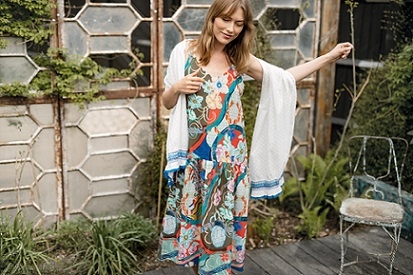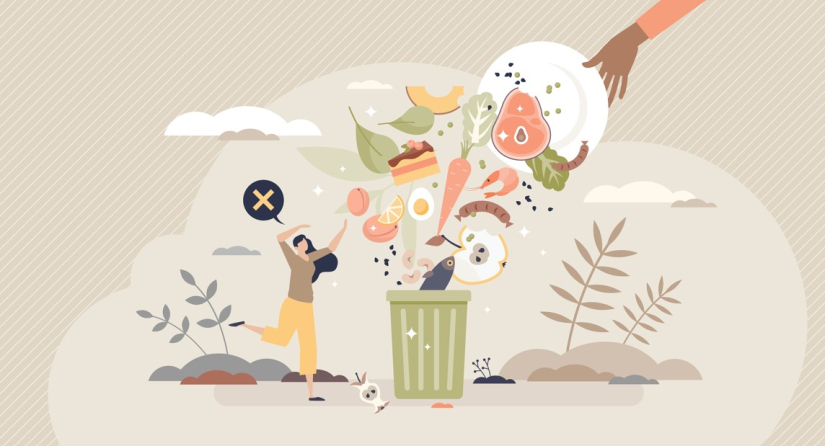What does ‘sustainable fashion’ really mean?
Can the fashion industry and sustainability ever go hand-in-hand? Veggie investigates

Aware of the environmental impact the fashion industry has, more of us are turning to sustainable clothing, fully aware that everything we wear comes at a cost in terms of energy, water, land and chemicals used. But with words like ‘conscious’, ‘cruelty-free’ and ‘ethical’ thrown around, it can be overwhelming trying to navigate which brands truly live up to the concept. So what does ‘sustainable’ fashion actually look like?
Sustainability essentially refers to the impact that the production of an item has on the earth, but when it comes to fashion, this is a pretty broad concept. Every part of a garment’s creation, from how it’s processed and transported, to how long it will take to break down in landfill, affects its worthiness of the ‘sustainable’ tag.
Material matters
Sustainable clothing starts at the source, so whether an item is comprised of fabrics that have been man-made or grown is a key consideration. Many pieces are produced from synthetic fibres or plant materials that are chemically dissolved and spun into fibres such as rayon, lyocell and viscose. The most commonly used synthetic fibre is polyester, which is made from non-renewable petroleum, and undergoes an energy-intensive manufacturing process. What’s more, these fabrics release plastic microfibres into our water systems, and they won’t biodegrade at the end of their lifecycle. That said, natural fibres such as cotton, wool, cashmere, and silk come with their own environmental implications. While these are biodegradable, they require a huge amount of land and water, and may still use chemicals – not to mention the animal welfare aspects that also come with the use of these fabrics.
The manufacturing process also has a huge impact on sustainability: this stage requires a vast amount of water for the dyeing and finishing of garments. The use of chemicals for treating items such as washed jeans also leads to contaminants being washed into rivers and waterways.

Shifting Patterns
As a consumer, this may sound a bit doom-and-gloom, but don’t worry, you don’t need to run around naked to be sustainable. One positive step is the rise in organic fabrics. Just like organic produce, these require less water, and are grown without the use of fertilisers and other chemicals. More ethical initiatives are also cropping up that support sustainable growers and producers, such as the Fairtrade Cotton Programme and the Better Cotton Initiative.
Be a Smart Shopper
We know what you’re thinking: no one wants to spend hours researching companies to find out how sustainable they are! Transparency is the key to change, so start by looking for brands that are open about how they source fabrics, the materials used, and the manufacturing process. For example, companies such as People Tree, Thought Clothing and Nomads clearly state their environmental commitment on their websites, as well as listing the fabric composition of each individual piece, so you can be sure that you’re selecting garments that are composed of more sustainable fibres such as Tencel, organic cotton and bamboo. In addition, look for clothing marked as organic, or pieces that have been made with recycled fabrics and materials – we love brands that do this, like Ecoalf, Patagonia and Sundried. If you are concerned about greenwashing, then it’s worth reaching out to a company to find out more. In addition, avoid purchasing items that have clearly gone through more energy-intensive processes, such as distressed jeans, or pieces that are clad in non-biodegradable elements such as sequins.

Waste not, want not
One of the biggest elements of the chain that has yet to see vast improvement is waste. As the UK’s love of clothing grows, the amount that we’re sending to landfill is quite alarming. In fact, according to the Waste and Resources Action Programme (WRAP), the total amount of clothing sent to landfill or incineration rose by 10% to 336,000 tonnes between 2015 and 2017. On top of this figure, there’s an additional 194,000 tonnes of shoes, bags, belts and other accessories being disposed of. WRAP also notes that people keep pieces for just three years on average. But by extending the ‘active life’ of our clothes by just nine months, we can reduce carbon, water and waste footprints by 4-10%.
Aside from donating your secondhand items to charity shops and collection banks, you can also consider selling pieces on platforms like eBay, or exchanging clothes with friends. Looking for clothing that’s more durable will also help ensure it stays in circulation for years to come. More ‘swap shops’ are also popping up across the country, where people are encouraged to donate secondhand items and pick up something ‘new’ in exchange. The best part is that as awareness increases, more options are becoming available, and changes are being implemented across the board. So, while the fashion industry may have a long way to go, more companies are stepping up to the challenge, and making it easier for us to be sustainable and stylish at the same time.






_825_589_int.JPG)





